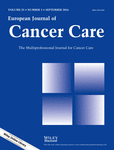Surveillance of waiting times for access to treatment: a registry-based computed approach in breast cancer care
Abstract
The current study set out to automatically generate waiting times for access to surgery, chemotherapy and radiotherapy, and to analyse their determinants for non-metastatic breast cancer patients. We used data from the Poitou-Charentes regional cancer registry of women diagnosed with stages I–III breast carcinoma between 2008 and 2010. Waiting times were automatically computed from a previously validated algorithm modelling the care trajectory and then compared with national guidelines. The population of this study included 1082 patients. The compliance with guidelines ranged from 52.4% (access to adjuvant chemotherapy) to 89.2% (access to adjuvant radiotherapy). Younger age, a higher TNM stage, a lower grade, having a triple negative tumour, being the subject of multidisciplinary meetings and being a patient at a public hospital were associated with longer waiting times. The main result was the significant heterogeneity between geographical areas of treatment for all waiting times studied. The original, reproducible use of a registry-based automated algorithm to generate waiting times will help to follow these indicators routinely and efficiently.




